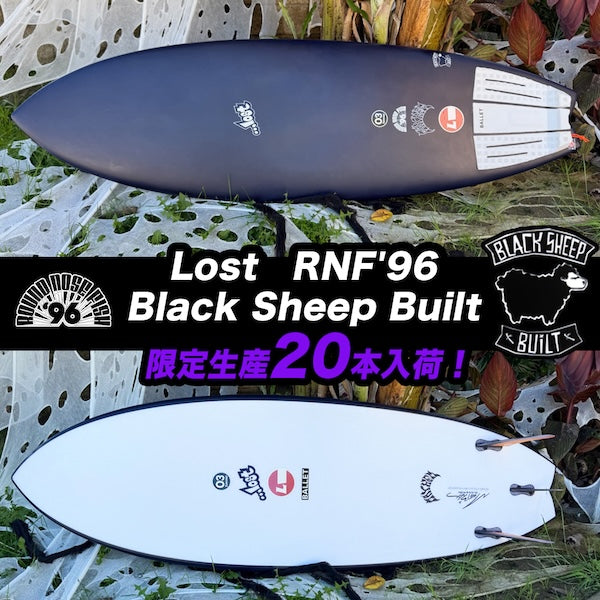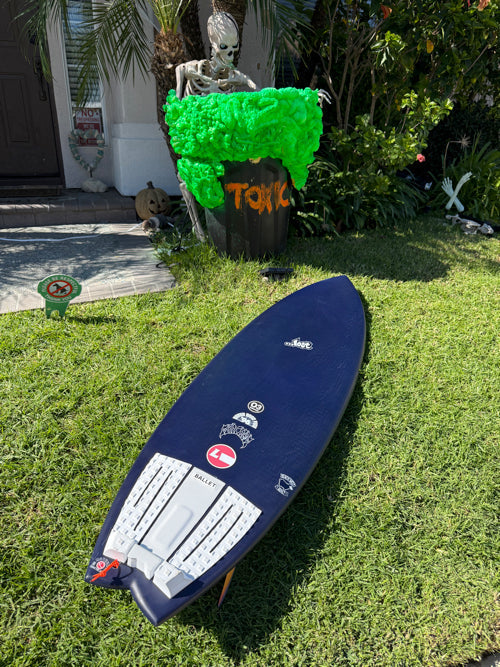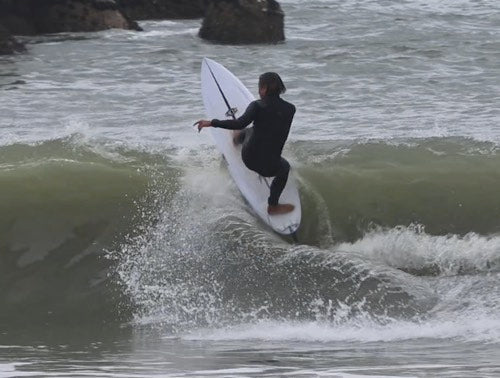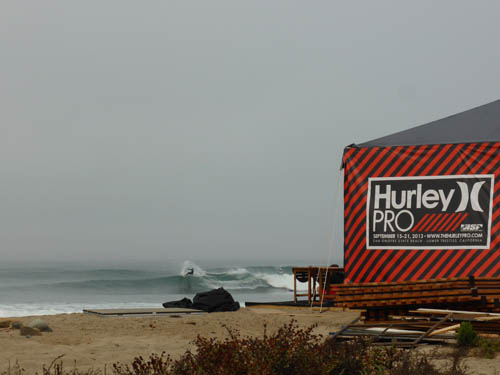
Nishii will be at LOWERS the day before the HURLEY PRO.
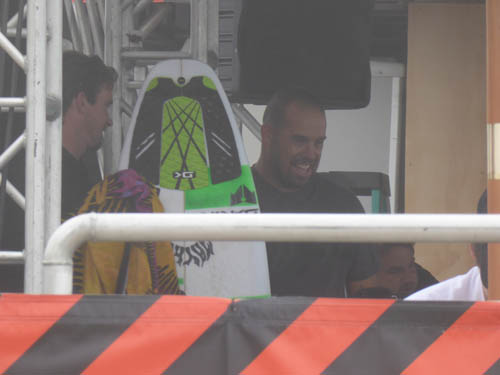
The fog was so thick in the morning that you couldn't see the waves even on the beach.
The conditions were not suitable for filming, so I decided to surf alongside the WCT competitors.
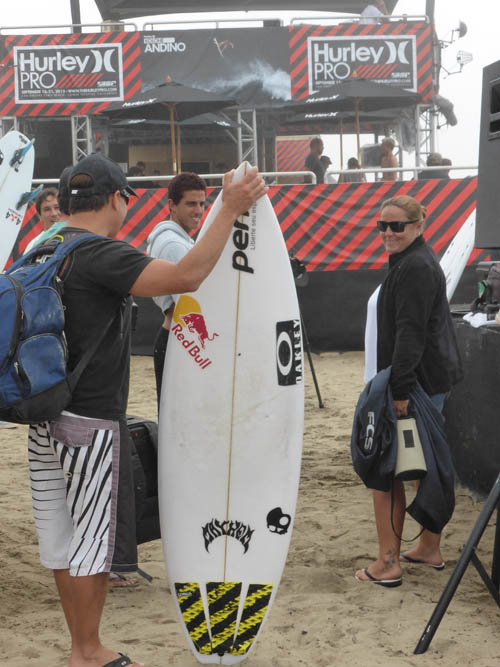
When I went out, Kelly, Parko, Kolohe and others were surfing,
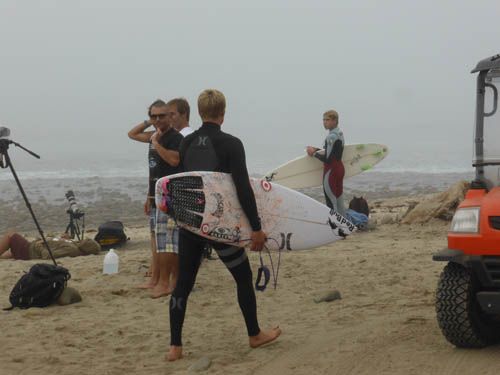
I noticed that there was a trick to their quick takeoff.
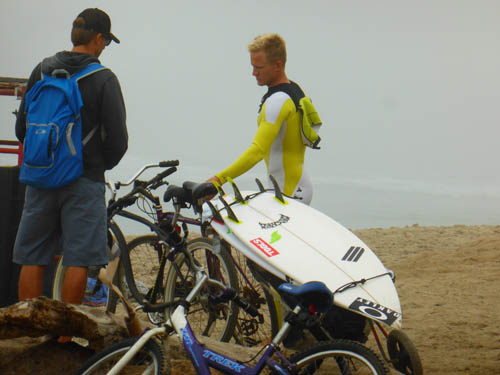
It involves paddling to the best takeoff position on the wave and then taking off.
I was watching the waves that were coming in the range that I could paddle in front of me,
The wave always takes off from the part of the wave that acts as a ``launch pad'' to push the board forward when it is lying flat on its stomach.
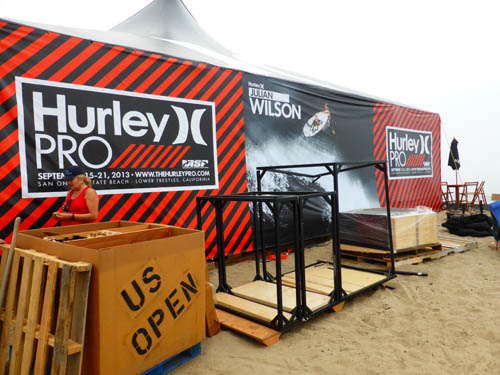
If you are having trouble taking off, try observing which part of the water a good rider is taking off from.
I think it's good to surf. If you're not good at taking off, try paddling in a place where you can't take off.
You may find yourself paddling too far. Look up to a skilled surfer and try to imitate where they take off on the same wave you're currently surfing. By gaining experience surfing on a variety of waves, you can hone your "wave reading" skills, which will allow you to read the "launch pad" that will push your board forward. While waiting for a wave, the range you can move to the "launch pad" will vary depending on your individual paddling ability, but try it out to suit your own paddling level.
The boards of these WCT athletes, who are looking for the ultimate in maneuverability with boards that have the utmost buoyancy, are not boards that prioritize takeoff,
Seeing the WCT athletes take off right in front of me, I was reminded once again how important takeoff is in surfing.
See you tomorrow when I report from the WCT venue, which is likely to be filled with MAYHEM boards.
The event is scheduled to start at midnight on the 16th, Japan time.
 Nishii will be at LOWERS the day before the HURLEY PRO.
Nishii will be at LOWERS the day before the HURLEY PRO.
 The fog was so thick in the morning that you couldn't see the waves even on the beach.
The conditions were not suitable for filming, so I decided to surf alongside the WCT competitors.
The fog was so thick in the morning that you couldn't see the waves even on the beach.
The conditions were not suitable for filming, so I decided to surf alongside the WCT competitors.
 When I went out, Kelly, Parko, Kolohe and others were surfing,
When I went out, Kelly, Parko, Kolohe and others were surfing,
 I noticed that there was a trick to their quick takeoff.
I noticed that there was a trick to their quick takeoff.
 It involves paddling to the best takeoff position on the wave and then taking off.
I was watching the waves that were coming in the range that I could paddle in front of me,
The wave always takes off from the part of the wave that acts as a ``launch pad'' to push the board forward when it is lying flat on its stomach.
It involves paddling to the best takeoff position on the wave and then taking off.
I was watching the waves that were coming in the range that I could paddle in front of me,
The wave always takes off from the part of the wave that acts as a ``launch pad'' to push the board forward when it is lying flat on its stomach.
 If you are having trouble taking off, try observing which part of the water a good rider is taking off from.
I think it's good to surf. If you're not good at taking off, try paddling in a place where you can't take off.
You may find yourself paddling too far. Look up to a skilled surfer and try to imitate where they take off on the same wave you're currently surfing. By gaining experience surfing on a variety of waves, you can hone your "wave reading" skills, which will allow you to read the "launch pad" that will push your board forward. While waiting for a wave, the range you can move to the "launch pad" will vary depending on your individual paddling ability, but try it out to suit your own paddling level.
The boards of these WCT athletes, who are looking for the ultimate in maneuverability with boards that have the utmost buoyancy, are not boards that prioritize takeoff,
Seeing the WCT athletes take off right in front of me, I was reminded once again how important takeoff is in surfing.
See you tomorrow when I report from the WCT venue, which is likely to be filled with MAYHEM boards.
The event is scheduled to start at midnight on the 16th, Japan time.
If you are having trouble taking off, try observing which part of the water a good rider is taking off from.
I think it's good to surf. If you're not good at taking off, try paddling in a place where you can't take off.
You may find yourself paddling too far. Look up to a skilled surfer and try to imitate where they take off on the same wave you're currently surfing. By gaining experience surfing on a variety of waves, you can hone your "wave reading" skills, which will allow you to read the "launch pad" that will push your board forward. While waiting for a wave, the range you can move to the "launch pad" will vary depending on your individual paddling ability, but try it out to suit your own paddling level.
The boards of these WCT athletes, who are looking for the ultimate in maneuverability with boards that have the utmost buoyancy, are not boards that prioritize takeoff,
Seeing the WCT athletes take off right in front of me, I was reminded once again how important takeoff is in surfing.
See you tomorrow when I report from the WCT venue, which is likely to be filled with MAYHEM boards.
The event is scheduled to start at midnight on the 16th, Japan time.


